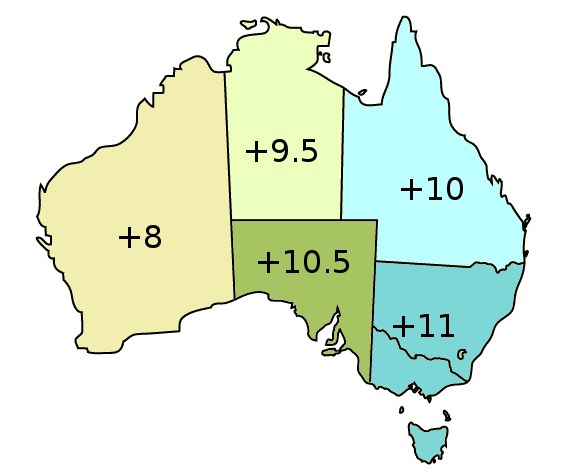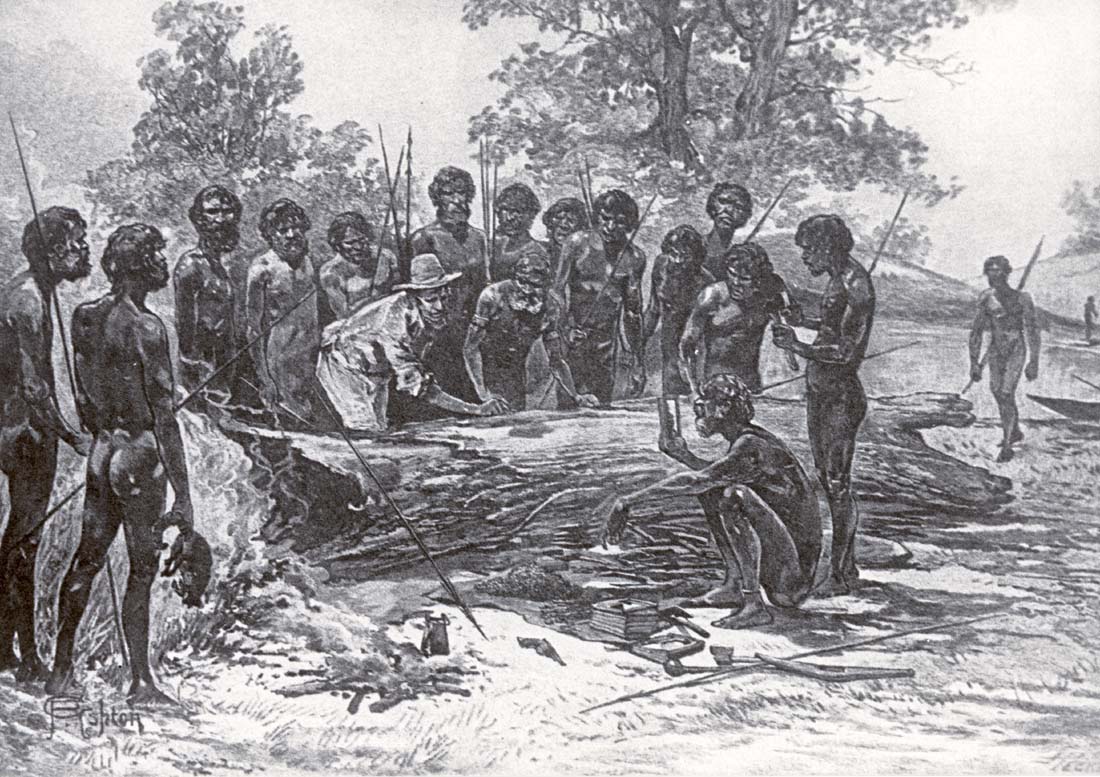|
Kemmis, Queensland
Kemmis is a rural locality in the Isaac Region, Queensland, Australia. In the , Kemmis had a population of 6 people. Geography The land is lower and flatter to the south and east, above sea level. However, the terrain becomes more mountainous in the west and north of the locality, with the following peaks (from north to south): * Mount Lookout () * Mount Hess () * Mount Yuckawaw () The Suttor Developmental Road enters the locality from the north-east ( Hail Creek) and exits to the west ( Elphinstone). The Goonyella railway line enters the locality from the south-west (Strathfield) and exits to the north-west (Hail Creek). South Walker Creek Mine is a large coal mine in the south of the locality extending into neighbouring Strathfield. There are many other former mine sites in Kemmis. Apart from mining, the land use is grazing on native vegetation. History The locality was named after pastoralist, Arthur Kemmis, who participated in William Landsborough's 1861 expedi ... [...More Info...] [...Related Items...] OR: [Wikipedia] [Google] [Baidu] |
AEST
Australia uses three main time zones: Australian Western Standard Time (AWST; UTC+08:00), Australian Central Standard Time (ACST; UTC+09:30), and Australian Eastern Standard Time (AEST; UTC+10:00). Time is regulated by the individual state governments, some of which observe daylight saving time (DST). Australia's external territories observe different time zones. Standard time was introduced in the 1890s when all of the Australian colonies adopted it. Before the switch to standard time zones, each local city or town was free to determine its local time, called local mean time. Now, Western Australia uses Western Standard Time; South Australia and the Northern Territory use Central Standard Time; while New South Wales, Queensland, Tasmania, Victoria, Jervis Bay Territory, and the Australian Capital Territory use Eastern Standard Time. Daylight saving time (+1 hour) is used in jurisdictions in the south and south-east: South Australia, New South Wales, Victoria, Tasm ... [...More Info...] [...Related Items...] OR: [Wikipedia] [Google] [Baidu] |
Suburbs And Localities (Australia)
Suburbs and localities are the names of geographic subdivisions in Australia, used mainly for address purposes. The term locality is used in rural areas, while the term suburb A suburb (more broadly suburban area) is an area within a metropolitan area, which may include commercial and mixed-use, that is primarily a residential area. A suburb can exist either as part of a larger city/urban area or as a separate ... is used in urban areas. Australian postcodes closely align with the boundaries of localities and suburbs. This Australian usage of the term "suburb" differs from common American and British usage, where it typically means a smaller, frequently separate residential community outside, but close to, a larger city. The Australian usage is closer to the American or British use of "district" or "neighbourhood", and can be used to refer to any portion of a city. Unlike the use in British or American English, this term can include inner-city, outer-metropolitan ... [...More Info...] [...Related Items...] OR: [Wikipedia] [Google] [Baidu] |
Melbourne
Melbourne ( ; Boonwurrung/ Woiwurrung: ''Narrm'' or ''Naarm'') is the capital and most populous city of the Australian state of Victoria, and the second-most populous city in both Australia and Oceania. Its name generally refers to a metropolitan area known as Greater Melbourne, comprising an urban agglomeration of 31 local municipalities, although the name is also used specifically for the local municipality of City of Melbourne based around its central business area. The metropolis occupies much of the northern and eastern coastlines of Port Phillip Bay and spreads into the Mornington Peninsula, part of West Gippsland, as well as the hinterlands towards the Yarra Valley, the Dandenong and Macedon Ranges. It has a population over 5 million (19% of the population of Australia, as per 2021 census), mostly residing to the east side of the city centre, and its inhabitants are commonly referred to as "Melburnians". The area of Melbourne has been home to Abori ... [...More Info...] [...Related Items...] OR: [Wikipedia] [Google] [Baidu] |
Gulf Of Carpentaria
The Gulf of Carpentaria (, ) is a large, shallow sea enclosed on three sides by northern Australia and bounded on the north by the eastern Arafura Sea (the body of water that lies between Australia and New Guinea). The northern boundary is generally defined as a line from Slade Point, Queensland (the northwestern corner of Cape York Peninsula) in the northeast, to Cape Arnhem on the Gove Peninsula, Northern Territory (the easternmost point of Arnhem Land) in the west. At its mouth, the Gulf is wide, and further south, . The north-south length exceeds . It covers a water area of about . The general depth is between and does not exceed . The tidal range in the Gulf of Carpentaria is between . The Gulf and adjacent Sahul Shelf were dry land at the peak of the last ice age 18,000 years ago when global sea level was around below its present position. At that time a large, shallow lake occupied the centre of what is now the Gulf. The Gulf hosts a submerged coral reef ... [...More Info...] [...Related Items...] OR: [Wikipedia] [Google] [Baidu] |
William Landsborough
William Landsborough (21 February 1825 – 16 March 1886) was an explorer of Australia and notably he was the first explorer to complete a North-to-South crossing of Australia. He was a member of the Queensland Legislative Council. Early life Landsborough was born in Stevenston, Ayrshire, Scotland, the son of Rev Dr David Landsborough (a clergyman, entomologist and artist) and his wife Margaret, ''née'' McLeish. William Landsborough was educated in Irvine and migrated to Australia in 1842, several years after his brothers James and John. Early life in Australia William Landsborough arrived in Sydney on the ''Duke of Richmond'', on 30 September 1842. He joined his brothers James and John on their property in the New England district of New South Wales and stayed with them until 1850 when he went into partnership with a friend, William Penson, buying 30,000 acres nearby which they named Oak Ridge. When gold was discovered in Bathurst, New South Wales in 1851, he went to th ... [...More Info...] [...Related Items...] OR: [Wikipedia] [Google] [Baidu] |
Arthur Kemmis
Arthur is a common male given name of Brythonic origin. Its popularity derives from it being the name of the legendary hero King Arthur. The etymology is disputed. It may derive from the Celtic ''Artos'' meaning “Bear”. Another theory, more widely believed, is that the name is derived from the Roman clan '' Artorius'' who lived in Roman Britain for centuries. A common spelling variant used in many Slavic, Romance, and Germanic languages is Artur. In Spanish and Italian it is Arturo. Etymology The earliest datable attestation of the name Arthur is in the early 9th century Welsh-Latin text ''Historia Brittonum'', where it refers to a circa 5th to 6th-century Briton general who fought against the invading Saxons, and who later gave rise to the famous King Arthur of medieval legend and literature. A possible earlier mention of the same man is to be found in the epic Welsh poem ''Y Gododdin'' by Aneirin, which some scholars assign to the late 6th century, though this is still a ... [...More Info...] [...Related Items...] OR: [Wikipedia] [Google] [Baidu] |
Pastoralism
Pastoralism is a form of animal husbandry where domesticated animals (known as " livestock") are released onto large vegetated outdoor lands ( pastures) for grazing, historically by nomadic people who moved around with their herds. The animal species involved include cattle, camels, goats, yaks, llamas, reindeer, horses and sheep. Pastoralism occurs in many variations throughout the world, generally where environmental characteristics such as aridity, poor soils, cold or hot temperatures, and lack of water make crop-growing difficult or impossible. Operating in more extreme environments with more marginal lands means that pastoral communities are very vulnerable to the effects of global warming. Pastoralism remains a way of life in many geographic areas, including Africa, the Tibetan plateau, the Eurasian steppes, the Andes, Patagonia, the Pampas, Australia and many other places. , between 200 million and 500 million people globally practised pastora ... [...More Info...] [...Related Items...] OR: [Wikipedia] [Google] [Baidu] |
Goonyella Railway Line
The Goonyella railway system is located in Central Queensland, Australia. It services the coal mining area of the Bowen Basin, carrying coal to the Hay Point and Dalrymple Bay Coal Terminals 20 km southeast of Mackay, as well as products to other destinations by way of connections to the North Coast Line at Yukan and the Central Line at Burngrove via the Gregory coal mine branch. It is also connected to the coal loading terminal at Abbot Point (20 km northwest of Bowen) by the GAP line. The line opened on 5 November 1971 and runs for 477 kilometres. A 200 km extension called the Carmichael Rail Network was built in 2021. The Goonyella system is narrow gauge and electrified using 25 kV 50 Hz. The line has been duplicated from Hay Point to Wotonga (174 km) and features CTC signalling over the entire system. Mines The Goonyella Coal Chain services 25 mines, carrying coal from BHP Mitsubishi Alliance, Anglo Coal, Bravus Mining & Resources, Macarthur Coal, ... [...More Info...] [...Related Items...] OR: [Wikipedia] [Google] [Baidu] |
Suttor Developmental Road
The Suttor Developmental Road is a highway in the east of the Australian state of Queensland. It runs in SE-NW direction and has a length of 167 km. It connects the Peak Downs Highway with the Bowen Developmental Road. It is signed as State Route 11. Route The Suttor Developmental Road branches north of Nebo from the Peak Downs Highway (State Route 70) to the west and south of the Homevale National Park to the locality of Elphinstone. The paved road ends at Elpinstone after which it hugs the western shore of Lake Elphinstone. Later it crosses the Isaac River. In the locality of Eaglefield it crosses the Suttor River, after which it is named. Finally, it reaches the locality of Mount Coolon at the Bowen Developmental Road Bowen Developmental Road is a rural strategic main road in Queensland, Australia. It is part of State Route 77, and functions as a highway. It has a length of and extends in northeast-southwest direction from Bowen on the east coast of Au ... ... [...More Info...] [...Related Items...] OR: [Wikipedia] [Google] [Baidu] |
Queensland Government
The Queensland Government is the democratic administrative authority of the Australian state of Queensland. The Government of Queensland, a parliamentary constitutional monarchy was formed in 1859 as prescribed in its Constitution, as amended from time to time. Since the Federation of Australia in 1901, Queensland has been a State of Australia, with the Constitution of Australia regulating the relationships between all state and territory governments and the Australian Government. Under the Australian Constitution, all states and territories (including Queensland) ceded powers relating to certain matters to the federal government. The government is influenced by the Westminster system and Australia's federal system of government. The Governor of Queensland, as the representative of Charles III, King of Australia, holds nominal executive power, although in practice only performs ceremonial duties. In practice executive power lies with the Premier and Cabinet. The Cabinet ... [...More Info...] [...Related Items...] OR: [Wikipedia] [Google] [Baidu] |
Queensland
) , nickname = Sunshine State , image_map = Queensland in Australia.svg , map_caption = Location of Queensland in Australia , subdivision_type = Country , subdivision_name = Australia , established_title = Before federation , established_date = Colony of Queensland , established_title2 = Separation from New South Wales , established_date2 = 6 June 1859 , established_title3 = Federation of Australia, Federation , established_date3 = 1 January 1901 , named_for = Queen Victoria , demonym = , capital = Brisbane , largest_city = capital , coordinates = , admin_center_type = Administration , admin_center = Local government areas of Queensland, 77 local government areas , leader_title1 = Monarchy of Australia, Monarch , leader_name1 = Charles III , leader_title2 = Governor of Queensland, Governor , leader_name2 = Jeannette Young , leader_title3 = Premier of Queensland, Premier , leader_name3 = Annastacia Palaszczuk (Australian Labor Party (Queensland Branch), AL ... [...More Info...] [...Related Items...] OR: [Wikipedia] [Google] [Baidu] |
Isaac Region
The Isaac Region is a local government area located in Central Queensland, Queensland, Australia created in March 2008 as a result of the report of the Local Government Reform Commission released in July 2007. History Yagalingu is an Australian Aboriginal language of Central Queensland. Its traditional language region was within the local government area of Isaac Region, from the headwaters of the Belyando River south to Avoca, north to Laglan, west to the Great Dividing Range, and east and south to Drummond Range. Prior to 2008, the Isaac Region was an entire area of three previous and distinct local government areas: * the Shire of Belyando; * the Shire of Broadsound (taking its name from Broad Sound); * and the Shire of Nebo. The report recommended that the new local government area should not be divided into wards and elect eight councillors and a mayor. The Isaac Regional Council covers an area of , had a population in 2018 of 20,934 and an operating budget of ... [...More Info...] [...Related Items...] OR: [Wikipedia] [Google] [Baidu] |




.jpg)

